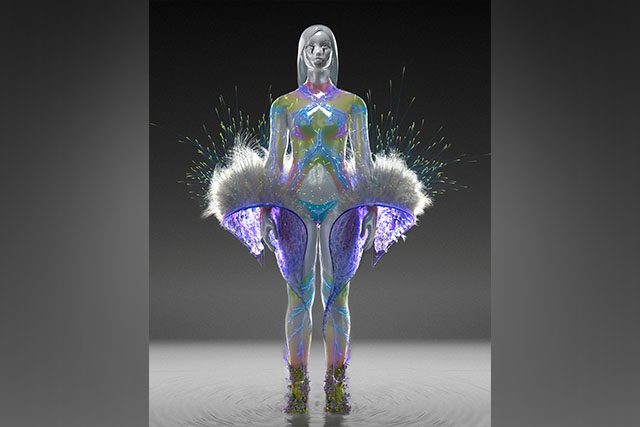
LONDON — People care what their avatars are wearing.
When the virtual world Decentraland said in June users could make and sell their own clothing for avatars to wear on the site, Hiroto Kai stayed up all night designing Japanese-inspired garments.
Selling kimonos for around $140 each, he said he made $15,000-$20,000 in just three weeks.
While the idea of spending real money on clothing that does not physically exist is baffling to many, virtual possessions generate real sales in the “metaverse” — online environments where people can congregate, walk around, meet friends and play games.
Digital artist and Japan-enthusiast Kai’s real name is Noah. He’s a 23-year-old living in New Hampshire.
After making as much in those three weeks as he’d earn in a year at his music store job, he quit to become a full-time designer.
“It just took off,” Kai said.
“It was a new way to express yourself and it’s walking art, that’s what’s so cool about it… When you have a piece of clothing, you can go to a party in it, you can dance in it, you can show off and it’s a status symbol.”
In Decentraland, clothing for avatars — known as “wearables” — can be bought and sold on the blockchain in the form of a crypto asset called a non-fungible token (NFT).
Kai’s kimonos include exquisite crushed blue velvet pieces with golden dragon trim.
NFTs exploded in popularity earlier this year, as speculators and crypto enthusiasts flocked to buy the new type of asset, which represents ownership of online-only items such as digital art, trading cards and land in online worlds.
The niche crypto assets are also capturing the attention of some of the world’s biggest fashion companies, keen to associate themselves with a new generation of gamers – although most of their forays so far are for marketing.
LVMH-owned Louis Vuitton launched a metaverse game where players can collect NFTs, and Burberry has created branded NFT accessories for Blankos Block Party, a game owned by Mythical Games. Gucci has sold non-NFT clothing for avatars within the game Roblox.
“Your avatar represents you,” said Imani McEwan, a Miami-based fashion model and NFT enthusiast. “Basically what you’re wearing is what makes you who you are.”
McEwan reckons he has spent $15,000 to $16,000 on 70 NFT wearable items since January, using profit from cryptocurrency investments. His first purchase was a bitcoin-themed sweater and he recently bought a black beret designed by his friend.
Selfie shopping
The overall size of the NFT wearables market is difficult to establish. In Decentraland alone wearable sales volume totalled $750,000 in the first half of 2021, up from $267,000 in the same period last year, according to NonFungible.com, a website which tracks the NFT market.
Some proponents say wearables and shopping in virtual shops could be the future of retail.
“Instead of scrolling through a feed and shopping online, you can have a more immersive brand experience by exploring a virtual space—whether you are shopping for your online avatar or buying physical products that can be shipped to your door,” said Julia Schwartz, director of Republic Realm, a $10 million virtual real estate investment vehicle which has built a shopping mall in Decentraland.
For NFT enthusiasts, online fashion does not replace physical purchases.
But Paula Sello and Alissa Aulbekova, co-founders of the digital fashion start-up Auroboros, say it could be an environmentally-friendly alternative to fast fashion.
Customers can send Auroboros an image of themselves and have clothing digitally added for 60 pounds ($83) to 1,000 pounds.
Sello argued that the virtual garment concept could limit the waste of consumers buying clothes to wear on social media, citing a 2018 Barclaycard study which found 9% of British shoppers have bought clothes for social media photos, then returned them.
“We need to have the shift now in fashion. The industry simply cannot continue,” said Sello.
Virtual sneaker company RTFKT sells limited edition NFTs representing sneakers which can be “worn” in some virtual worlds or on social media via a Snapchat filter.
“It really took off when COVID started and loads of people went more online,” said Steven Vasilev, RTFKT’s co-founder and CEO.
The company has posted $7 million of sales, with limited edition sneakers selling in auctions for $10,000-$60,000, he said. While the majority of customers are in their 20s and 30s, some are as young as 15.
RTFKT’s NFTs can also be used as a token to get a free physical version of the shoe, but one in 20 customers do not redeem that token.
“I didn’t do the redemption stuff because I couldn’t be bothered,” said Jim McNelis, a Dallas-based NFT buyer who founded NFT company, nft42.
“I try to avoid the physical stuff as much as possible.” ($1 = 0.7241 pounds) — Editing by Alexandra Hudson









